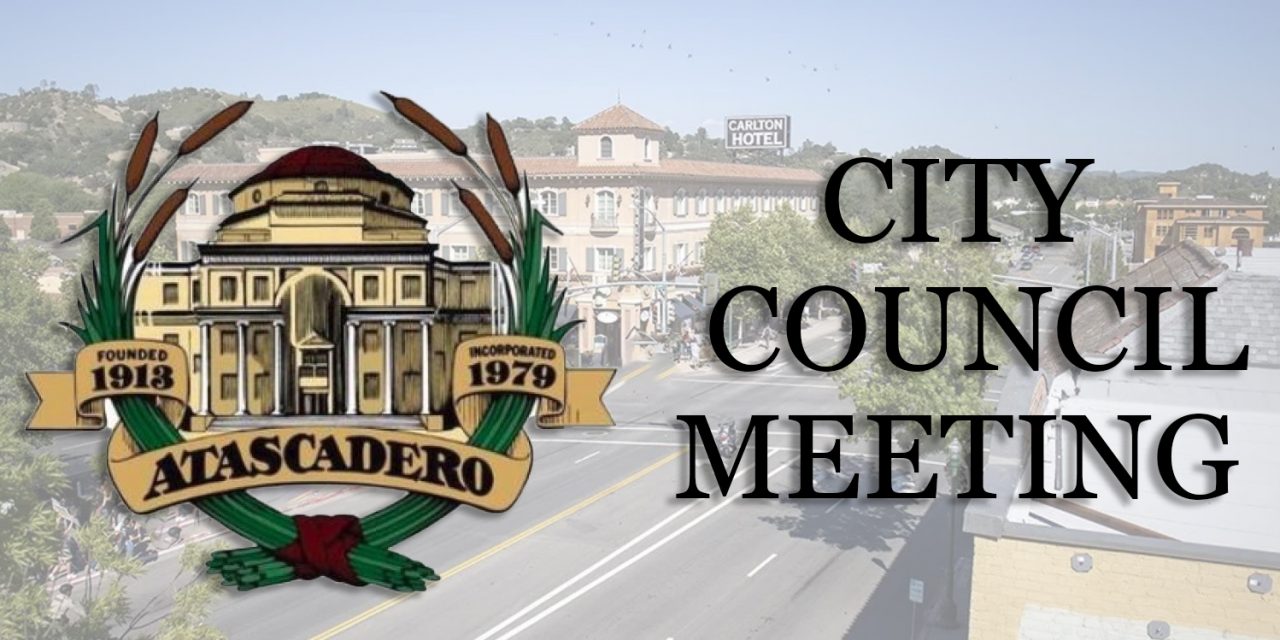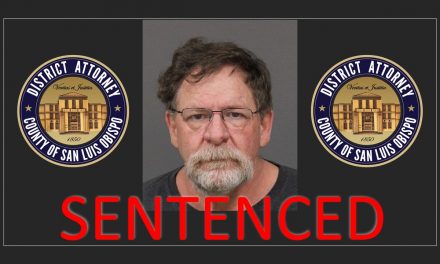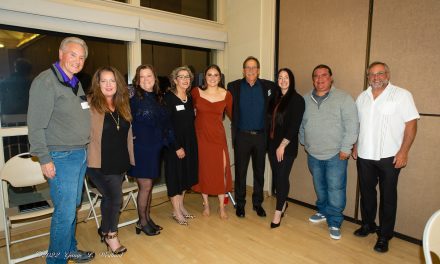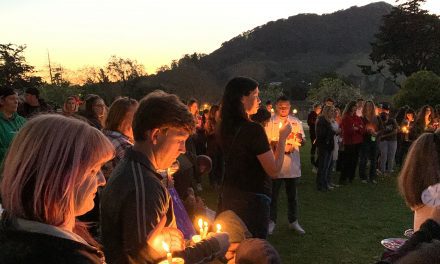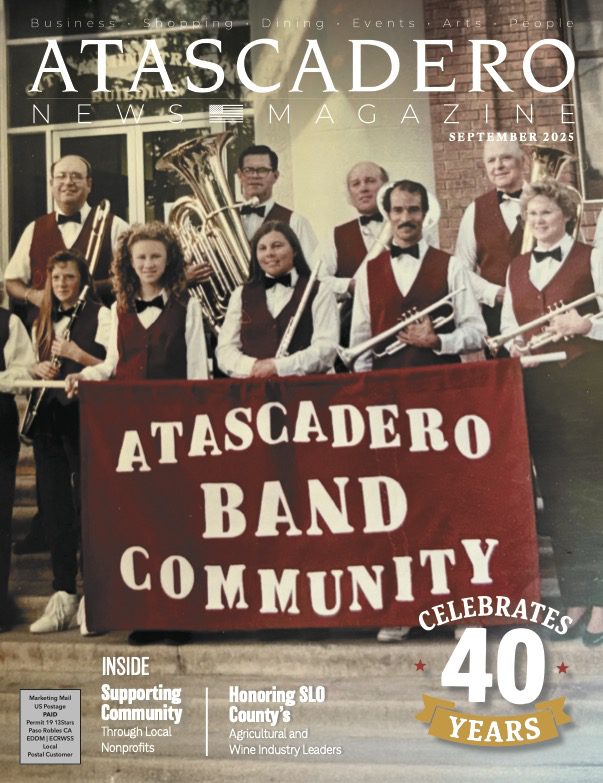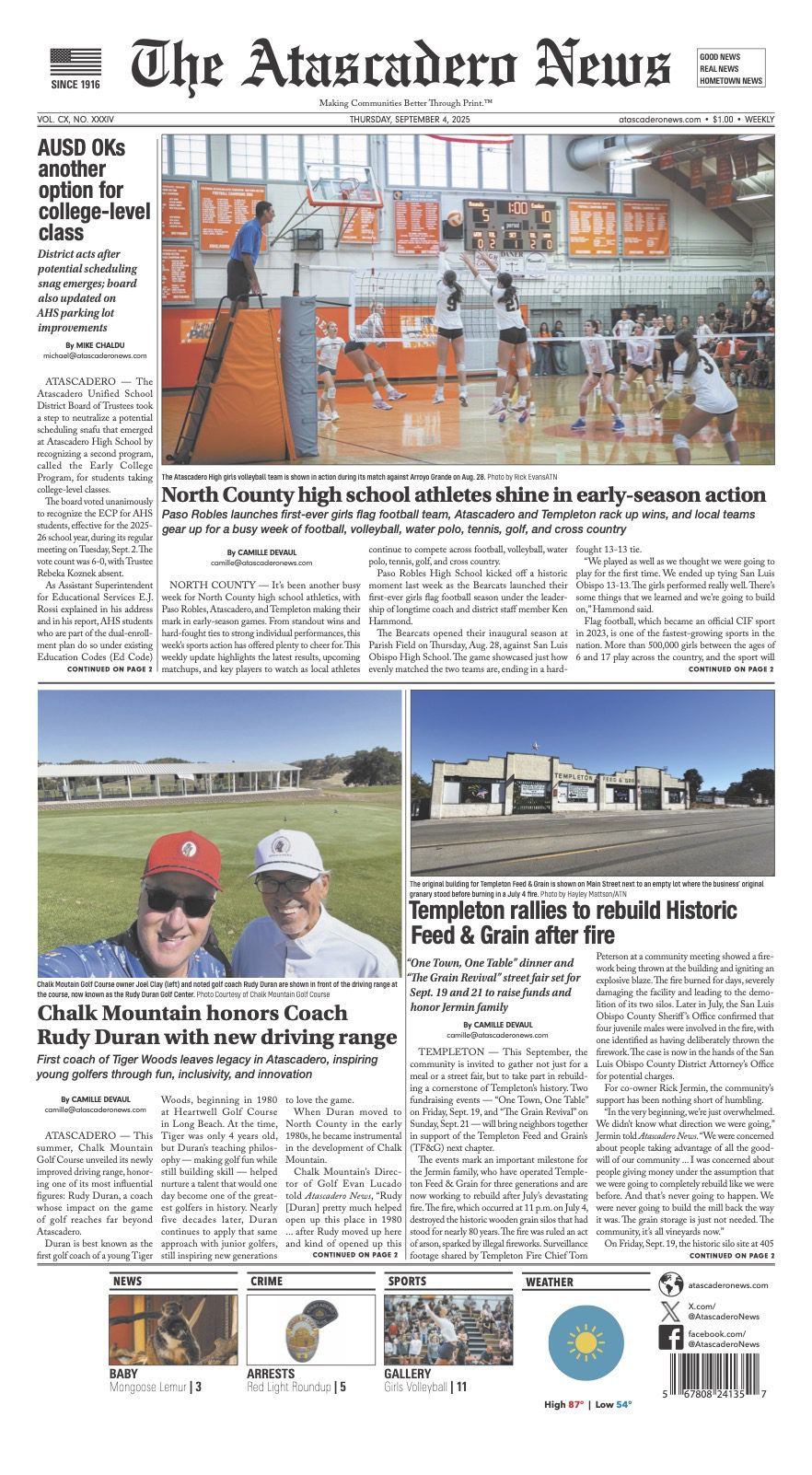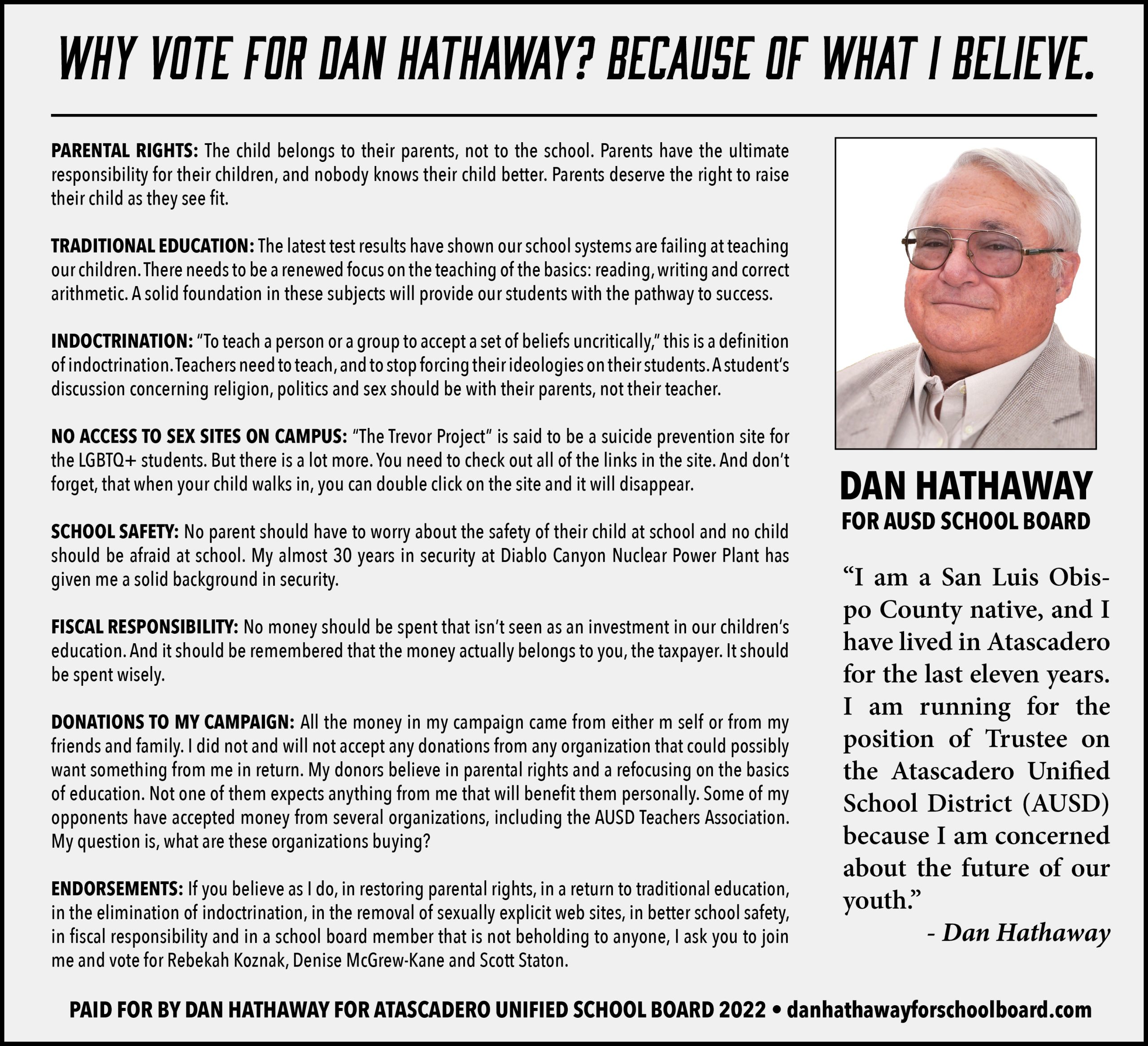Fire Chief Bryson presents City’s Evacuation Strategy
ATASCADERO — Atascadero City Council met on Tuesday, Oct. 26, for their regularly scheduled meeting at 6 p.m., following a closed session with nothing to report. The agenda was approved 5-0, as was the consent calendar.
The City Manager’s report was presented by City Manager Rachelle Rickard, who provided the following updates:
- Atascadero Lake Clean-up Day was a great success.
- Central Coast Craft Beer Festival was attended by over 2000 guests.
- Over 1000 people came out to the Zoo Boo event at the Charles Paddock Zoo.
- The first 20 people to come in costume to the Farmer’s Market Information Booth on Wednesday, Oct. 27 from 3-6 p.m. will receive a free chocolate chip cookie.
- Downtown Trick or Treat will be taking place on Entrada Ave. for a safe, family-friendly event on Halloween, Oct. 31, from 3-6 p.m. The event is free to attend and will feature candy hand-outs from local businesses, a hay maze, food and beverages from local restaurants, costume contests for various age groups, a pet costume contest, a bounce house, and more!
- Mark Russo Sr. is once again putting on a Spooktacular Haunted House featuring a “Lights, Sights and Frights Show” every night from 7 p.m. until about 10 p.m. through the rest of October at 7720 Cortez Ave.
- Residential Waste Drop Off is still going on from now until Oct. 30 7:30 a.m. to 3:00 p.m. at Atascadero Chicago Grade Landfill. Atascadero Residents can get rid of extra household waste for free. Please contact Waste Management at (805) 466-3636 or visit the local office to request your voucher.
The Community Forum portion of the meeting began with Maggie Payne from the We Are The Care Initiative. She presented Council with new data regarding income for caregivers. A new study conducted by BW Research and commissioned by Cuesta College analyzes the economic impact of the childcare industry here in SLO County. Key findings and conclusions include the following:
- Most childcare workers can work full time and still not earn a living wage.
- The living wage for a single adult with no dependents in SLO County is roughly $38,400 per year.
- The average earnings for a childcare worker in the county are $27,200, which is 71 percent of the living wage.
- The average cost of childcare in the county is roughly $10,000 per year.
- The conservative estimate suggests that 2300 children in the county may have working parents, but are not able to be enrolled in a program.
- Meeting 100 percent of the low-end estimates for the potential need for childcare in SLO County would increase Gross Regional Product (GRP) by more than $108,000,000 annually, and support and create 425 jobs from that new economic activity.
- Meeting the entirety of the high-end estimate of the potential childcare demand would have an even greater economic impact, contributing $734,000,000 to the GRP, roughly equivalent to the GRP contributions of full-service restaurants, residential property managers, and hotels combined.
For more ways to get involved with We Are The Care, you can contact them at first5slo.org
Genevieve Sharrow, Jake Cranor, and Ashleigh Kanat from Economic and Planning Systems (EPS), along with Community Development Director Phil Dunsmore, presented the Affordable Housing Impact Fee Nexus Studies Update.
The team posed two questions for Council in order to help guide the team in the right direction as the project moved forward.
Council was asked to decide: what is the preferred basis for charging a fee to developers?
- Single Family, per unit / Multifamily, per unit
- Single Family, per sq. ft. (up to a not-to-exceed maximum / Multifamily, per sq. ft. (up to a not-to-exceed maximum)
- Below 2,000 (ex.) sq. ft., per unit or per sq. ft. up to a not-to-exceed maximum / Above 2,000 (ex.) sq. ft., to a not-to-exceed maximum
- RS Zoning, per unit or per sq. ft. up to a not-to-exceed maximum / Other Residential Zoning, per unit or per sq. ft. up to a not-to-exceed maximum
- Within Urban Services Line, per unit or per sq. ft. up to a not-to-exceed maximum / Outside Urban Services Line, per unit or per sq. ft. up to a not-to-exceed maximum
Then Council was asked: are there exemptions the Council may want to consider?
- Units that are “affordable by design” (smaller than 1,000 square feet)
- Areas target for infill
- Deed-restricted units (by income or age)
- Replacement units (redevelopment)
- Rebuilt units (post-fire, flood earthquake, etc.)
- Other
While the Council did not vote on anything related to the project during the meeting, their goal was to provide EPS consultants with feedback and a general direction so that the team can move forward with their recommendations.
Council discussed these options in-depth and asked a long series of questions to the consultants.
Public forum was opened to members of the public. Local real estate broker and developer Max Zappas called in and asked whether or not we have to do this? Zappas stated that consultants have a conflict of interest and are incentivized by making more money by doing more studies and continue with more consulting. He also stated that they have no skin in the game locally.
“The bottom line is, the lower we can make the cost of housing production, the more homes will be produced,” said Zappas. “Everybody gets that. People have commented on it. Charging $10,000, charging $15,000, charging $60,000 per home—it just pumps those prices from wherever they were in the $500,000-$600,000 range up into the $600,000-$700,000 range, so I don’t know how that helps the problem. It just makes it worse.”
Zappas cited Paso Robles, who have no fees, “and they’ve been nailing it.” “I just hope we can go with no fees.” He also cited that Atascadero has been doing really well when compared to other cities like Pismo or Morro Bay.
“We’re building hundreds (of homes), and we’re still hitting the low income, the moderate-income,” said Zappas, “and we have a lot more projects in the pipeline that will hit those very low-income sections.”
Ken Treguero from People’s Self-help Housing was the next caller.
“Folks were questioning that huge cost, but I can confirm those kind of numbers of what we’re seeing out there,” said Treguero, alluding to the cost estimate of $585,000 to build a low-income single-family home, presented by EPS. “I would point out that probably less than half of that $585,000 shown is the hard cost of construction for building. The rest is the land and development impact fees, the stormwater—civil engineering is getting really expensive… I just want to make sure that the Council hears that there’s definitely some data out there to support that.”
Atascadero Fire Chief Casey Bryson and Steve Weinberger from W-Trans presented the Emergency Evacuation Traffic Planning Study. They gave a broad overview of processes, theories, and tactics for emergency evacuation, including public awareness, evacuation routes, traffic flow engineering, emergency broadcast methods, and more.
The Evacuation Strategy includes increasing vehicle capacity for evacuating traffic at US 101 interchanges, increasing vehicle capacity at intersections projected to operate deficiently, and providing manual traffic control at all-way stop-controlled intersections.
The meeting was adjourned at 9:23 p.m., and the next meeting is scheduled for Tuesday, Nov. 9 at 6 p.m.

